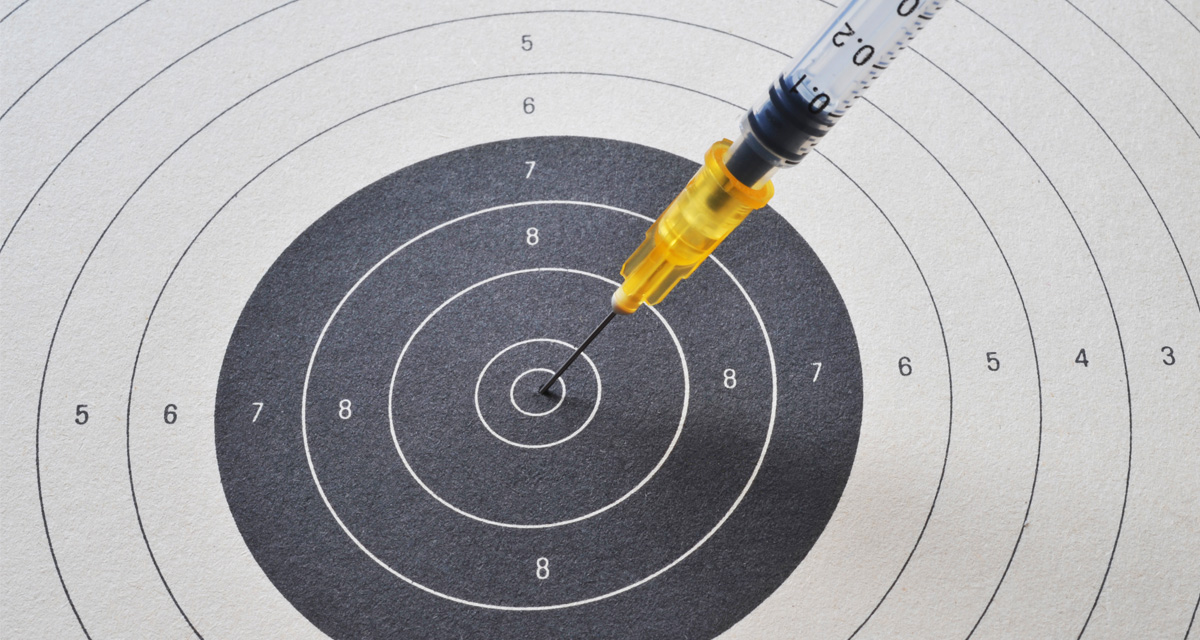If you have diabetes, you have most likely heard that you should aim for an HbA1c measure of 7 percent or lower. But what does this really mean?
HbA1c is a measure of average glucose over a period of about 2-3 months. It essentially evaluates how much glucose binds to your hemoglobin. Since red blood cells, which carry hemoglobin, live about 2-3 months, HbA1c gives an estimation of glucose level over that period. That’s why patients take HbA1c tests only a few times a year.
The test was first used during the 1980s in clinical studies and was found to be a good predictor of diabetes complications. It was found that in patients with diabetes, the higher the HbA1c, the higher the chances they develop diabetes complications or worsen the current complications.
In a healthy individual, HbA1c is 5.6 percent and below. Yet for those treated with diabetes medications, the HbA1c measure is a delicate balancing act. Because some medications that treat diabetes can cause hypoglycemia (too low blood sugar), aiming for normal HbA1c is not feasible. These medication classes include the sulfonylurea class (e.g., glipizide, glimepiride), the glinide class (e.g., repaglinide) and insulins.
How did 7 percent become the standard?
The first study that used HbA1c as a marker was done on patients with type 1 diabetes using insulin. A HbA1c value of 7 percent on average was found to be a value that patients could maintain without being overwhelmed with hypoglycemia. HbA1c values of 6.5-7 percent have provided good protection against complications and premature death.
But an average is just that – an average of many people, without considering individual factors. Not all patients can easily maintain HbA1c at about 7 percent. In fact, some patients are more vulnerable to developing hypoglycemia at that level of HbA1c, and thus it may not be safe for them.
The current guidelines overall recommend HbA1c levels below 7 percent for most patients and include examples of those who may not benefit from this level of HbA1c. For example, take an elderly individual with ongoing multiple medical conditions who does not feel symptoms when their glucose goes too low. In this case, the patient may suffer from hypoglycemia, and the low HbA1c value would not be beneficial.
Is HbA1c 7 percent achievable?
Although the recommendation is for most patients to aim for HbA1c below 7 percent, we have learned that aiming for a particular HbA1c does not mean that we get there at all or get there safely. As a physician, it doesn’t matter if I choose an HbA1c goal of 6, 7 or 8 percent for a patient if I am not able to reduce their HbA1c below 10 percent. On the other hand, I am not helping a patient if I reduce their HbA1c to 7 percent and they suffer from unsafe, frequent hypoglycemia.
Once a patient requires insulin therapy, maintaining HbA1c at 7 percent in a safe and effective way is even more challenging.
That’s because insulin requirements are highly dynamic, and they never settle to a steady state. Even if a patient can achieve HbA1c of 7 percent without significant hypoglycemia, at some point they would suddenly reduce their insulin requirements and suffer from dangerous hypoglycemia. The challenge is to make sure that insulin doses are adjusted frequently enough to react to these dynamics in a timely manner.
Managing diabetes is a constant balancing act between high blood sugar and low blood sugar. Some patients might achieve a good balance at an HbA1c a little higher than 7 percent.
The goal is not to aim for a specific HbA1c number, it is to maintain HbA1c in a range that is safe and effective for each person.


